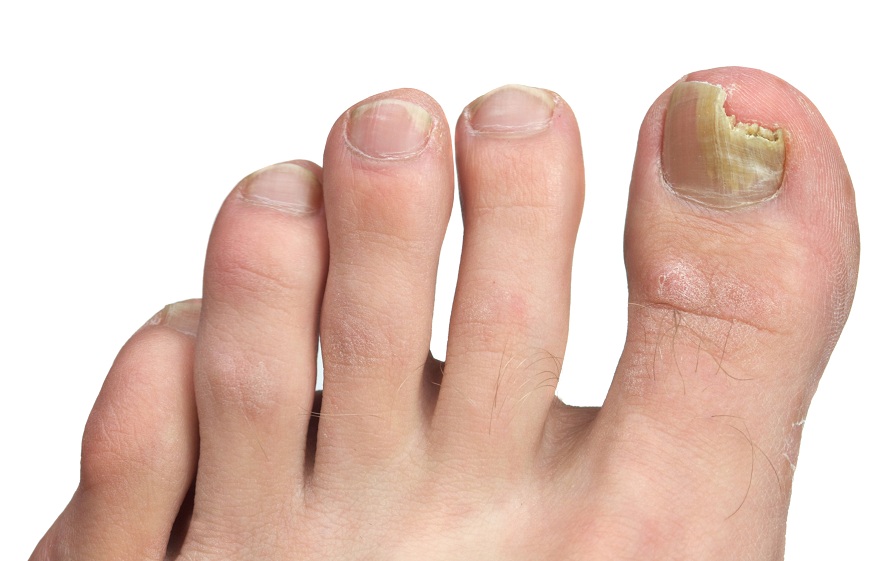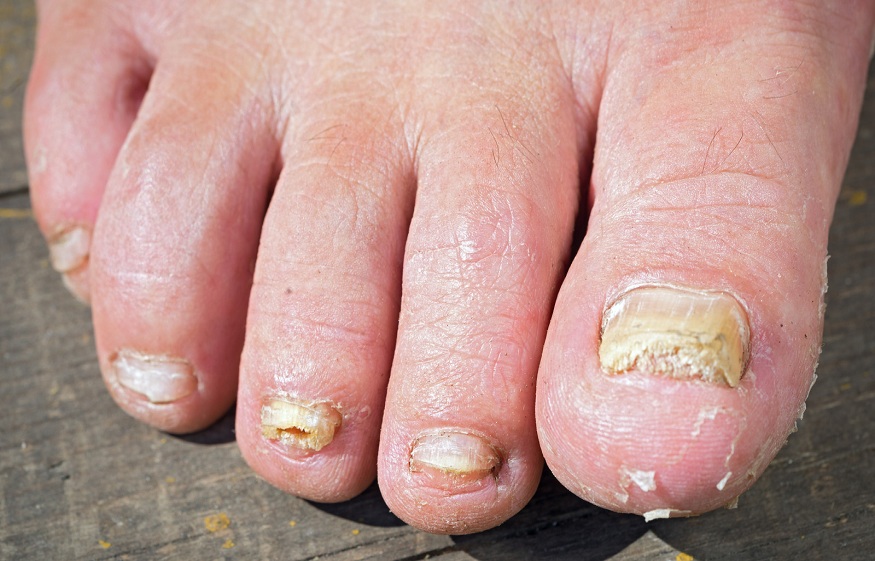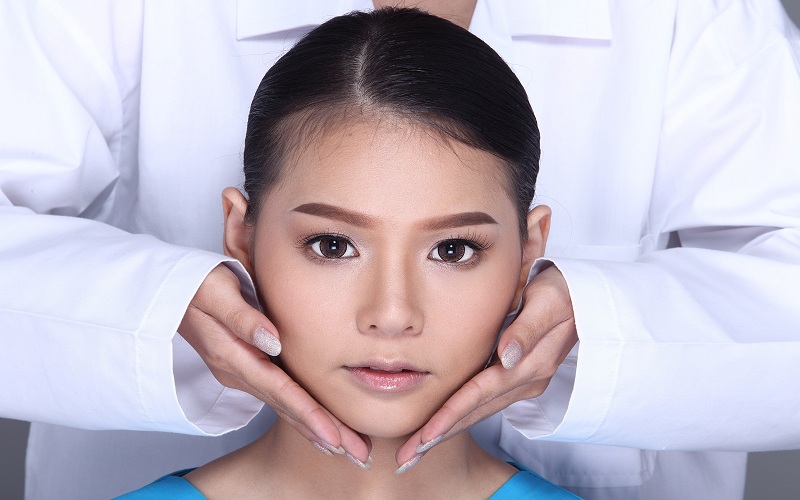Nail fungus or “onychomycosis” would affect 6 to 9% of the population, mainly adults and particularly in the feet. They must be treated quickly to prevent their spread to other parts of the body…
Definition
Onychomycosis is the medical term for nail fungus, that is to say a proliferation of microscopic fungi under the fingernails or toenails. “Fungal infections are more frequent on the toenails than on the fingernails, in particular because of perspiration in the shoes” indicates Dr Olivier Cogrel, dermatologist at the Bordeaux University Hospital and President of the surgical group of the French Society of Dermatology . It is in particular the big toe which is the most affected. Various fungi are at the origin of mycoses. Often the fungus affects the spaces between the toes (intertrigo) and the fungi then colonize the nail and grow in the keratin” completes-t- he.
Nail fungus can spread to the spaces between the toes and sometimes to other parts of the body such as the buttocks or between the thighs. Transmission is mainly human-to-human, especially for dermatophytes.
Causes
The main causes of onychomycosis are heat and humidity due to perspiration , which promote an ideal growth medium for mycosis. Toenail fungus caused in more than 90% of cases by dermatophytes is caught when walking barefoot in locker rooms, swimming pools, gyms, saunas… Indeed the floors of these places are infested fungus caused by skin debris from peeling skin of infected people. Those who practice sports are thus more at risk of having toenail fungus. An immune deficiency or diabetes are contributing factors.
Mycosis of the fingernails, rarer, caused by yeasts mainly affects people in frequent contact with humidity during, for example, too frequent washing of the hands. Health professionals and bakers are particularly affected.
Symptoms: the nail that turns yellow and crumbles
The main symptom of nail fungus is a change in the appearance of the nail : it peels off and takes on a generally yellowish or whitish color . It can also become hard and crumble. Distolateral on ychomycosis is the most common. It is characterized by a yellowish spot which appears on the free edge of the nail and extends towards the matrix of the latter.
Diagnosis: a mycological sample of the nail
Diagnosis of nail fungus is clinical. The mycological sample allows the precise diagnosis of nail fungus. It is very difficult to tell the difference between nail fungus and another nail disease such as psoriasis. “This mycological examination is not necessarily done when the mycosis requires local treatment”emphasizes the dermatologist. The mycological sampling of the nail is not painful. It is necessary to cut the detached nail and then scrape the powdery debris underneath. About a month is needed to obtain the results of the mycological sampling.
Treatment: varnish, medicine, operation
When there is distal damage, we treat locally with an antifungal , ” he explains. Then, an antifungal varnish must be applied until it heals.” In order to obtain a very rapid efficiency, it is advisable to treat the mycosis as early as possible.possible, as soon as the first signs appear. The duration of the treatment is approximately 6 months for the fingernails. It is longer, around 9 to 12 months, for toenails. You must then remove the residual varnish with a solvent, file the surface of the nail and clean with a cleaning wipe. Do not stop treatment until the nail has grown back. Terbinafine is often prescribed after confirmation by mycological sampling for a period of approximately 6 months. Grisefulin is also possible in children. Fluconazole and itraconazole are prescribed if other treatments fail. Local treatment is combined with oral treatment.
It is sometimes essential to surgically remove the infected nail when, for example, drug treatment has proven ineffective. The appearance of the nail improves as it is replaced with a healthy nail. It takes about 6 months for fingernails and about 12 months for toenails. The risk of relapse is frequent.
Anti mycosis tips
- Have nails cut short
- Change socks daily and favorcotton rather than synthetic materials to limit sweat
- Limit the wearing of sports shoes to sports activities because they promote humidity.
- Use antiperspirants in case of excessive hand and/or foot sweating.
- Dry your feet thoroughly and more particularly between the toes, especially when the nails curl up with aging .
- Avoid washing your hands too frequently, situations favoring the appearance of fungal infections of the nails of the hand
- Wear gloves to avoid hand contact with water
- do not lend or borrow towels
- do not walk barefoot on the edges of swimming pools or in sports halls
“These hygiene measures must be strict to limit the risk of mycosis” emphasizes Dr Olivier Cogrel. For people who have recurrent nail fungus, “it is possible to apply an antifungal varnish as a preventive measure,” he indicates.
Thanks to Dr Olivier Cogrel, dermatologist at the Bordeaux University Hospital and President of the surgical group of the French Society of Dermatology .




